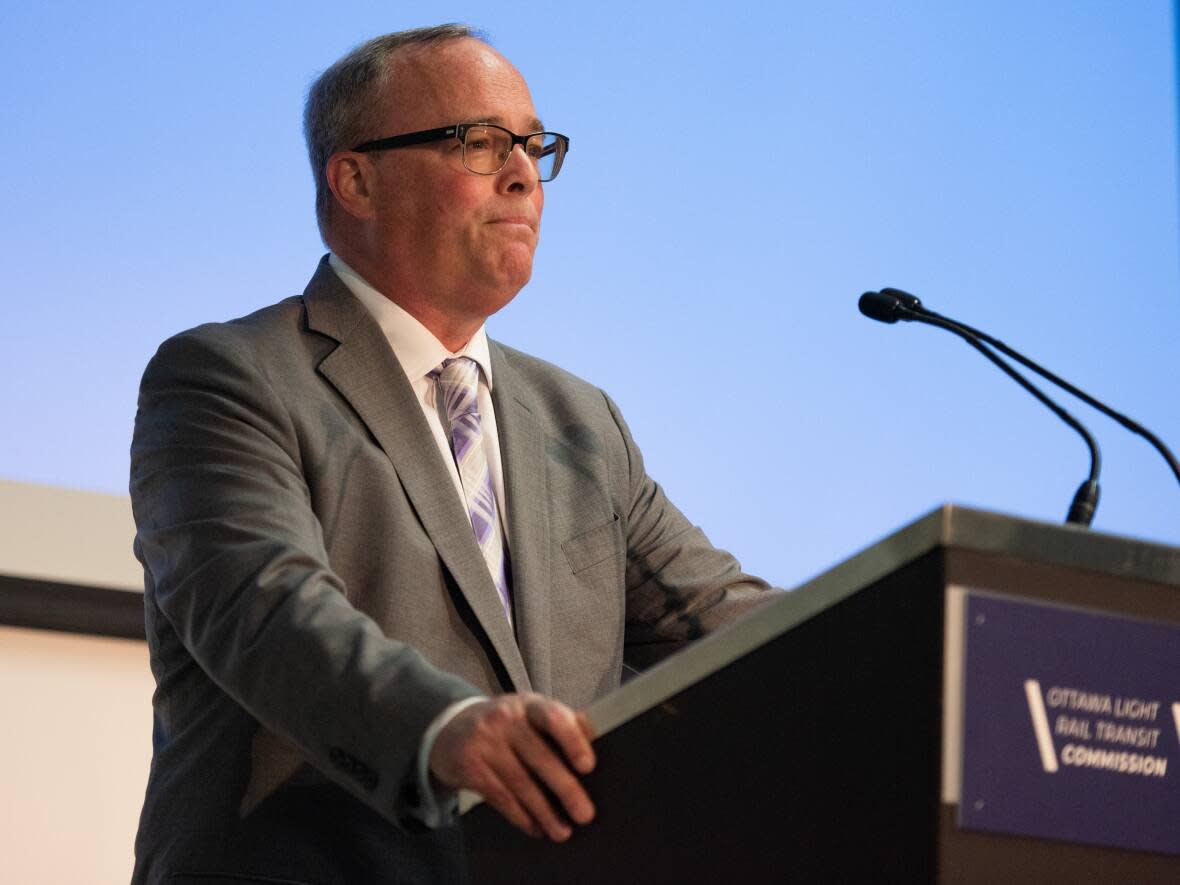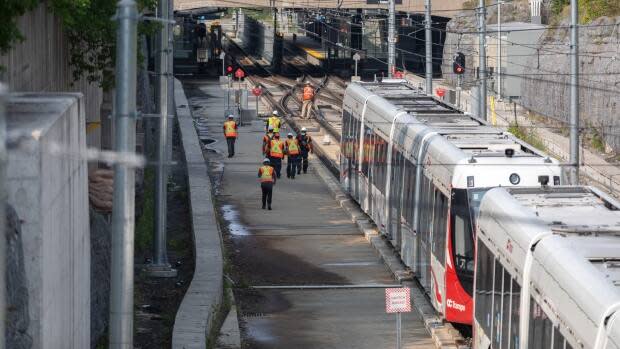LRT inquiry commissioner has ongoing concerns about cause of 1st derailment

The misalignment of the train wheels to the Confederation Line track that likely caused the first derailment last year needs a long-term fix, even if it means ripping up the track, says the Ottawa LRT public inquiry report.
"It is a critical safety issue affecting the [LRT] system if left unaddressed," wrote commissioner Justice William Hourigan in his much-anticipated 664-page report on what went wrong with the Confederation Line.
He called wheel-rail interface — the area where the train wheel meets the top of the track — "the most significant area that must be improved."
A light rail train derailed at Tunney's Pasture in August 2021 after a wheel broke off the axle due to a bearing issue. There were no passengers on the train — unlike the second derailment on the main line that happened the following month —and no injuries. The derailments were a key reason the province called the public inquiry a year ago.
But while we learned that the September 2021 derailment was due to human error, there is no "root cause" known for the first derailment,16 months after the fact.
Still, the commission found that "evidence suggests that the August 2021 derailment was related to the ongoing issues with the wheel/rail interface," a problem everyone knew about before the Confederation Line was launched.
In a preliminary report from last May, train-maker Alstom blamed the design of the track for causing excess stress to the train parts. In particular, the sharp curves on the track in the eastern side of the system — which where laid too flat, the company testified during the inquiry public hearings — cause friction underneath the bearing of the axle, leading to premature failure.
It is inexcusable that it took so long to marshal the necessary level of attention and response to this issue. - Justice William Hourigan, on wheel-rail misalignment
It's a finding with which the designer and builder of the system disagrees. In fact, Rideau Transit Group (RTG) has hired the National Research Council to perform a root cause analysis. The Transportation Safety Board is also conducting its own investigation.
In his report, Hourigan noted the disagreement between the two groups, but found that all parties agree the train wheels and the rail are misaligned, which causes more wear and tear on train components.
The fact the wheel and rail didn't match up were known before the Confederation Line went into service, and the commissioner admonishes the parties for not fixing the problem earlier.
"It appears that, given the rush to open the system, the parties did not take all the necessary steps to address the issue at that time," writes Hourigan. "It is inexcusable that it took so long to marshal the necessary level of attention and response to this issue."

He said the commission has ongoing concerns about the wheel-rail issue and that "it is critical that the risk of future derailments be mitigated."
As a permanent solution, Hourigan recommends using a different type of wheel, replacing part or all of the track, improving the axle design or even "modifying the track alignment to address the issue of sharp curves."
In the meantime, the commission has recommended short-term measures that the city and Rideau Transit Maintenance are already implementing, including reduced train speeds on the curves, more frequent inspections and maintenance of the trains.
Even so, another axle bearing failed on a train in July. Alstom said the issue was similar to what led to the August 2021 derailment.
On safety and reliability
The commissioner promised answers on the question of why the Confederation Line went so wrong.
He found that both the city and RTG rushed the LRT into service before it was ready, consortium executives "inexplicably" lied about when the LRT would be finished, and that city leaders lied to council members about changes to the contract and final testing.
While the comprehensive report did deliver on many answers, it cannot definitively address the one thing many transit riders want to know most: When will the Confederation Line be fixed?
To be fair, the LRT is not broken. But the report shows there are still many ongoing issues. After all, one can hardly call a train that has to dramatically slow down when it goes around curves "fixed."
The report does offer some cause for optimism, though.
The reliability has improved.
The Confederation Line isn't experiencing the kinds of problems that plagued it in the early days — door and brake failures, switch and communications breakdowns — that brought the line to a halt. Many glitches that should have been worked out during various phases of testing, which the commission found were shortened, were fixed while the public was using the system.
The commission found the Confederation Line "provided largely reliable service" between December 2021 and March 2022. And since then, according to the city, the LRT has had a 98-per-cent average reliability rate.
That means the system covered 98 per cent of its scheduled kilometres, except during the days after the May derecho and the July lightning strike.
The city also says it now has 16 double-car train sets available for service — one more than the contract calls for — although it only uses 13 at a time due to ridership levels.
But while Hourigan found that the city and RTG have been working better together since the derailments, the commission is still concerned that "more needs to be done to ensure the continued safe operation of the system."

 Yahoo Movies
Yahoo Movies 
